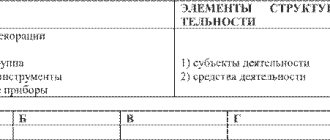Despite the fact that society has established certain boundaries and rules of behavior, it is human nature to violate them. Everyone has their own unique way of thinking, which leaves an imprint on communication with others. Sometimes this becomes the cause of such a phenomenon as deviant behavior. Examples of such non-standard thinking are quite numerous, and, fortunately, not always negative.
Definition of the concept
Deviation from generally accepted social norms is defined as deviant behavior. There are quite numerous examples of this phenomenon. At the same time, specialists from various fields define deviant behavior in their own way:
- From a sociological point of view, we can say that this is a phenomenon that poses a real threat to human survival in society. In this case, we are talking about both the deviant himself and his environment. In addition, there is a disruption in the processes of assimilation of information, reproduction of generally accepted values, as well as self-development and self-realization.
- From a medical point of view, disruption of interpersonal interactions and behavioral deviations are caused by the presence of neuropsychic pathologies of varying severity.
- From a psychological point of view, deviant behavior is an antisocial way of resolving conflict situations. At the same time, there is a desire to harm one’s own and public well-being.
Social conflict
The social conflict approach links deviance to social inequality. What behavior is considered deviant and what is not depends on which categories of people hold power in society. Why are some things illegal and others not? A social conflict theorist will argue that many actions are considered deviant because those in power have the resources to make those actions deviant. Moreover, the norms of any society generally reflect the interests of the rich and powerful, and powerful people have the resources to resist deviant labeling.
Main reasons
Unfortunately, psychologists still cannot accurately determine the range of reasons that provoke deviant behavior. The examples provide only a rough list. It looks like this:
- inconsistency between the goals set and the available means that can be used to achieve them;
- a decrease in the level of society's expectations from a particular individual, which gradually leads to marginalization;
- addiction to alcohol and drugs, deterioration of the genetic fund and other social pathologies;
- mental illnesses of various types;
- lack of clear motivation that would allow one to accurately determine adequate actions for a specific situation;
- social inequality and injustice that encourage aggression;
- armed conflicts, man-made disasters and natural disasters that disrupt the human psyche.
Positive deviation
Norms are the rules and expectations that guide members of a society. Deviation is a lack of compliance with these standards. For example, a deviant act may be committed in one society that violates a social norm there, but may be normal in another society. Social norms differ from culture to culture. It is clear about negative deviation - this is when deviant behavior causes harm to the whole society or individuals. But it’s worth understanding the positive deviation.
Positive deviance refers to behavioral and social change. In any context, some people who face similar challenges, constraints, and resource deprivations to their peers will nonetheless engage in unusual but successful behaviors or strategies that produce better solutions. Through the study of these individual subjects, called "positive deviants", innovative solutions to such problems can be identified and improved due to their behavioral response.
Characteristics of a deviant
Increasingly, in society one can encounter such a phenomenon as deviant behavior. Examples allow us to highlight a number of common features that are common to all people with this problem. Thus, deviants can be characterized as follows:
- cause a sharp negative reaction and condemnation from society;
- may cause physical or material harm to themselves or others;
- abnormal behavior is constantly repeated or has a permanent character;
- there is social maladjustment;
- behavioral deviations are fully consistent with individual personality characteristics;
- there is a desire to express one’s personal characteristics.
Merton's Strain Theory
Deviant behavior has both positive and negative consequences. Although Merton agreed that some degree of deviation was necessary for society to function, he argued that the culture and structure of society itself exerted pressures on individuals.
In other words, because of certain cultural values and goals, those who do not have the ability to legitimately deal with those goals feel a certain amount of tension. This is how criminals appear, people with negative deviant behavior who use unconventional means, such as crime, to achieve these goals.
Examples of deviant behavior in society
Despite the fact that theoretical definitions clearly describe behavioral signs, they do not always fully reflect the essence of the phenomenon. However, if you look around, you will be surprised how often deviant behavior occurs in society. Real life examples are as follows:
- People without a fixed place of residence. Due to the prevailing circumstances, their behavior differs significantly from generally accepted norms.
- Begging may cause pity or negative reactions from others. In any case, in a society where the vast majority provides themselves with material resources through work, such behavior is perceived inadequately.
- Prostitutes are morally reprehensible.
- Drug addicts and alcoholics are recognized as deviants not only because of their dependence on the use of certain substances. When intoxicated, they can pose a real physical threat to others.
- Oddly enough, monks, from the point of view of society, are also considered deviants. Most people do not understand the desire to give up all public benefits and opportunities.
- Geniuses are also treated with caution, despite the fact that scientific and technological progress has firmly entered modern life. Nevertheless, the attitude towards people with a high level of intelligence cannot be called negative.
- Murderers, maniacs and other criminals are condemned not only by society. The legislation provides for severe punishment for them.
When considering deviant behavior, examples from life can be given for a very long time. So, for example, someone might include here people of art, parasites, informal people, and so on. In any case, if desired, a person can rid himself of such a characteristic (regardless of whether it is acquired or congenital).
Prostitution and homosexuality
Deviant behavior, examples of which are shown by girls who provide sexual services for payment or without it, is also not a rare phenomenon. The main reason is the desire to earn money and improve their financial situation on their own, if parents are not able to provide all the whims dictated by fashion and the “beautiful life” promoted by the media. If we add to this the low level of culture of a teenager and his social promiscuity, dysfunction in the family and the indifference of adults, the path to the panel becomes a kind of salvation for the child, an opportunity to hide from difficulties and vicissitudes of fate. In order to reduce the level of prostitution among minors to a minimum, it is recommended to develop special sex education programs, equalize social inequality, and improve the culture of the population.
As for homosexuality, in most cases it is an innate predisposition. Having discovered that he is not like everyone else, the teenager becomes depressed, begins to take large quantities of medications and alcoholic drinks, and suffers from neuroses and mental disorders. Such a minor needs qualified assistance from a specialist. If he was drawn into homosexuality through deception or coercion, then the guilty persons face imprisonment. By the way, sexual perversion is also deviant behavior. Examples from life show that teenagers become interested in sadomasochism, group intimacy and other unnatural things.
Examples of positive deviant behavior
Positive deviant behavior is actions aimed at changing outdated values and norms that hinder further social development. It can manifest itself in creativity, political activity, or simply personal protest. Despite the fact that at the initial stage society may have a negative attitude towards such phenomena, examples of positive deviant behavior prove the effectiveness of this model:
- G. Perelman is a brilliant mathematician who became famous for proving the Poincaré theorem (other scientists worked on this for more than 100 years). As a result, he was nominated for several prestigious awards. But Perelman categorically refused all awards, which is bad form in scientific circles. However, this behavior did not bring any harm to society. In addition, Perelman considered it unnecessary to belittle the contributions of other mathematicians and generally transfer science to a commercial plane.
- The next example is also quite interesting, but there is no evidence of its veracity. Thus, the original method of psychiatrist D. Rogers was recognized as a mockery of patients, for which he was sentenced to death. The idea was to bring the patient to an extreme form of hysteria, after which he would recover and continue to live a normal life. Only 50 years after the execution, the doctor’s deviant behavior was recognized as effective.
- Some examples of positive deviant behavior have had a significant impact on our lives today. So, in the late 60s, computers were the size of a living room or even a school gym. A real revolution in this area was made by Steve Jobs and Bill Gates. What many considered madness, they brought to life. Today, almost everyone has a compact and functional computer.
Examples of situations of deviant behavior
Without even thinking about it, every day we encounter situations of deviant behavior. An example might be:
- A physically healthy young man enters public transport and takes an empty seat. There is nothing wrong with this, but at the next stop an elderly man gets on. Not wanting to give up his seat, the young man begins to pretend that he is sleeping and does not notice the old man. In most cases, this deviation is due not only to personal qualities, but also to improper upbringing.
- The student constantly violates discipline in the classroom, disturbing the teacher and his peers. Unfortunately, such manifestations of deviant behavior often cause a sharp reaction from teachers, which generates even greater resistance. As a rule, indiscipline among schoolchildren is a direct reflection of the psycho-emotional state and problems in the family.
- Social inequality and financial difficulties, in theory, should encourage people to take active action to overcome this situation. However, not everyone has the willpower to do this. Some people start using alcohol or drugs to escape reality, which inevitably causes social condemnation.
- People strive for the benefits of life, but the ways of obtaining them are different for everyone. For example, many, not feeling the desire or strength to earn money on their own, resort to theft.
Literary examples
If you are interested in examples of deviant behavior, you can learn a lot of interesting things from the literature. Here are the most striking of them:
- Raskolnikov from Dostoevsky’s “Crime and Punishment” demonstrates an example of deviant behavior. For the sake of material gain, he decides to kill.
- Chatsky’s behavior in the play “Woe from Wit” by Griboyedov. This character is sometimes hot-tempered and completely tactless. He acts as an exposer of other people's vices, as well as a strict judge of moral principles.
- In Tolstoy's novel Anna Karenina, the main character can also be cited as an example of deviant behavior. Adultery, extramarital affairs, and suicide are the clearest signs.
- In Makarenko’s “Pedagogical Poem,” almost all the orphanage students in one way or another personify deviant behavior. This work is interesting primarily because the talented teacher managed to correct the situation.
- The hero of Balzac's "Gobsek" is a rather interesting example of deviant behavior. A greedy moneylender has a pathological tendency to accumulate. As a result, in his closet they find a huge amount of material assets, as well as food that has simply spoiled.
Typology
Types of behavior that run counter to the normal way of life were also identified by the American sociologist Robert King Merton, known for his research on the problem. His typology is based on the concept of deviation as a gap between revered moral values and methods for achieving them:
- Innovation. People accept the goals of society, understand them, but deny normal ways of achieving them (prostitutes, creators of financial pyramids, blackmailers, great scientists).
- Ritualism. The goals of society are ignored, and the method of achieving them becomes absurd. An example is a bureaucrat who requires hundreds of document forms to be filled out in detail. At the same time, he forgets about the main thing: why the papers were signed.
- Retreatism is an escape from reality. The individual abandons goals and all ways to achieve them (drug addict, homeless person).
- Riot. Denial of moral principles, desire to remake them, replace them with more perfect and progressive ones (revolutionary).
Merton's types of behavior show us that deviation is not always negative. After all, there is nothing wrong with the actions of a revolutionary, he is simply trying to create better conditions for life. As for a great scientist, he is considered, on the contrary, to be a respected and revered person who has small oddities or eccentricities.
Examples from history
If you are interested in such a question as examples of deviant behavior, you can find quite a lot of interesting situations in history:
- One of the most striking examples of deviant behavior is the arson of the Temple of Artemis by a local resident of Ephesus, Herostratus. During torture, the man had to admit that he did this to glorify his name, so that his descendants would talk about him. Herostratus was not only sentenced to death, but also forbidden to mention him. Nevertheless, the historian Theopompus considered it necessary to talk about the crime of Herostratus, and therefore his goal was achieved.
- Adolf Hitler's behavior is also considered deviant. The particular danger was that he had strong leadership qualities and had power. The sad result is known to everyone.
- Another example of deviant behavior can be seen in the 1917 revolution. Then V.I. Lenin and his comrades decided to oppose the power of the tsar. The result was the formation of a fundamentally new state.
- There is a lot of evidence about how the deviant behavior of soldiers during the Great Patriotic War contributed to victory in battles. Thus, soldiers often sacrificed themselves by throwing themselves under the tracks of tanks with grenades. In this way they paved the way for their army. This is one of many examples of deviant behavior, which as a result are called a feat.
Alcoholism and drug addiction
These two forms of deviant behavior among adolescents are more common than others. Alcoholism is the excessive consumption of alcoholic beverages by minors, which threatens their physical and mental health and causes pathological addiction and dependence. There are many reasons: genetic predisposition, congenital syndrome, individual personality traits, unfavorable environment, curiosity. Deviant behavior, examples of which are demonstrated by schoolchildren who drink alcohol, becomes a consequence of a low level of development, lack of demand in the team, and lack of self-confidence. In order to fish a child out of a dangerous company and quickly save him from the negative influence of alcohol, it is necessary to find the victim an exciting activity, as well as normal friends who will set an example of self-affirmation through other means. The society also came up with legal measures to prevent minors from getting drunk: a ban on the sale of alcohol to persons under 18 years of age, a fine for parents if their son or daughter appears drunk. In addition, teaching children to drink alcohol is considered a crime, which is punishable by articles of administrative and criminal law.
Drug addiction is another deviation from the norm. It involves the systematic use of mind-stupefying substances that cause deep and irreversible disorders of mental and physical functions. A teenager becomes dependent on pills, injections and powders due to neglect from society. Often, minors use drugs to express themselves or satisfy their curiosity. Addiction to them often prompts a teenager to take a criminal path in order to illegally obtain money to purchase the potion. Children caught in such bondage should be treated in special institutions. Quitting drugs on your own is often impossible.
Children's deviant behavior
Unfortunately, deviant behavior in children is not uncommon. Examples that are most common are verbal aggression (foul language, rudeness and rudeness) and physical attack (hitting, biting or pushing). This phenomenon has specific reasons, the main ones being the following:
- Genetic predisposition to aggression, which is transmitted from close relatives. It is worth paying special attention to diseases associated with hearing and vision impairment, delayed mental and physical development, and mental disorders.
- The influence of external stimuli on the child’s psyche. This may be due to a tense situation in the family, conflicts with peers, or biased attitudes on the part of teachers.
- Physiological defects (speech or physical) often cause ridicule and negativity from others, and especially from children. This causes the child to feel inferior, which becomes one of the main causes of aggression.
To prevent and correct deviant behavior in children, the following measures can be taken:
- the task of adults is to arouse in the child a keen interest in communicating with peers, as well as teachers, psychologists and other adults who can help in solving the problem;
- formation of knowledge about the culture of behavior in society and skills of live communication with others;
- assistance in developing an adequate assessment of one’s own personality, as well as training in self-control techniques that will help stop attacks of aggression;
- independent or shared reading of fiction that contains positive examples of correct social behavior;
- organizing situational games during which children will independently model ways to resolve conflicts;
- rejection of habitual censures and prohibitions in favor of constructive dialogue, which is aimed at explaining to the child why deviant behavior is unacceptable.
Correction and work with social deviation
The disorder in question must be treated. Sometimes psychotherapy methods work, sometimes drug treatment helps (when therapy for any psychological disorders is required). A specialist should select methods. Self-medication is not recommended: it may not bring results or lead to a worsening of the situation.
Psychotherapy
Psychological or psychotherapeutic methods help correct people’s behavior, and are also effective in finding the causes of various types of deviations and working through them.
These are the methods:
- consultations (individual or in groups);
- art therapy;
- trainings (problem-oriented, for example).
Psychotherapy is not always effective. If necessary, a psychologist can involve a psychotherapist in solving a problematic problem.
Drug therapy
A psychotherapist is a doctor who can prescribe special medications that calm the nervous system, suppress aggression, and more.
May be indicated for use:
- antidepressants (relieve depression);
- tranquilizers (relieve anxiety and panic);
- sedatives (relieve panic attacks and aggressiveness);
- vitamins (in rare cases, vitamins that strengthen the nervous system, such as B vitamins, may be prescribed) and other remedies.
Other methods of struggle
Sometimes additional correction methods may be used. This includes physiotherapy, hardening, gymnastics, yoga, and special massages. Psychologists and psychotherapists note that sometimes a person’s acquisition of an exciting hobby has an extremely beneficial effect on the overall results of the struggle.
Deviant behavior of adolescents
A pressing problem is the deviant behavior of adolescents, examples of which, unfortunately, are numerous. The first manifestations can be noticed around 12-13 years of age. This is the most dangerous age, when a child still has a child’s perception of the world, but at the same time there is an irresistible desire to show himself to adults. Even if children behave normally, it is extremely important not to miss this period. An alarming signal may be a change in preferences in music and clothing, as well as the first manifestations of rudeness. If educational measures are not taken in time, this can lead to the following consequences:
- running away from home and vagrancy;
- smoking, as well as alcohol and drug use;
- theft;
- association with “bad” companies;
- criminal activity;
- passion for extremist ideas;
- computer addiction;
- early sexual life;
- life-threatening hobbies.
There are known examples of negative and positive deviant behavior of adolescents. If everything is clear with the first, then many perceive the second as a normal manifestation. This may be about excessive effort in learning or physical development. Despite the fact that these actions have a positive connotation, it is important to ensure that the child does not withdraw into himself, so that hobbies do not replace communication with peers.
Deviant behavior in children
A person’s personality begins to form from childhood; from birth he is surrounded by moral and value standards of behavior. Deviations most often begin to manifest themselves at school age, because it is there that the child is most exposed to the influence of other people.
Teachers and professionals are able to notice emerging deviations in a child and declare the need for prevention.
At the very beginning of the development of deviation, the child himself, and not his environment, is most susceptible to it. The child must be able to occupy himself with something interesting and be given the opportunity to develop correctly (read educational books and watch films).








